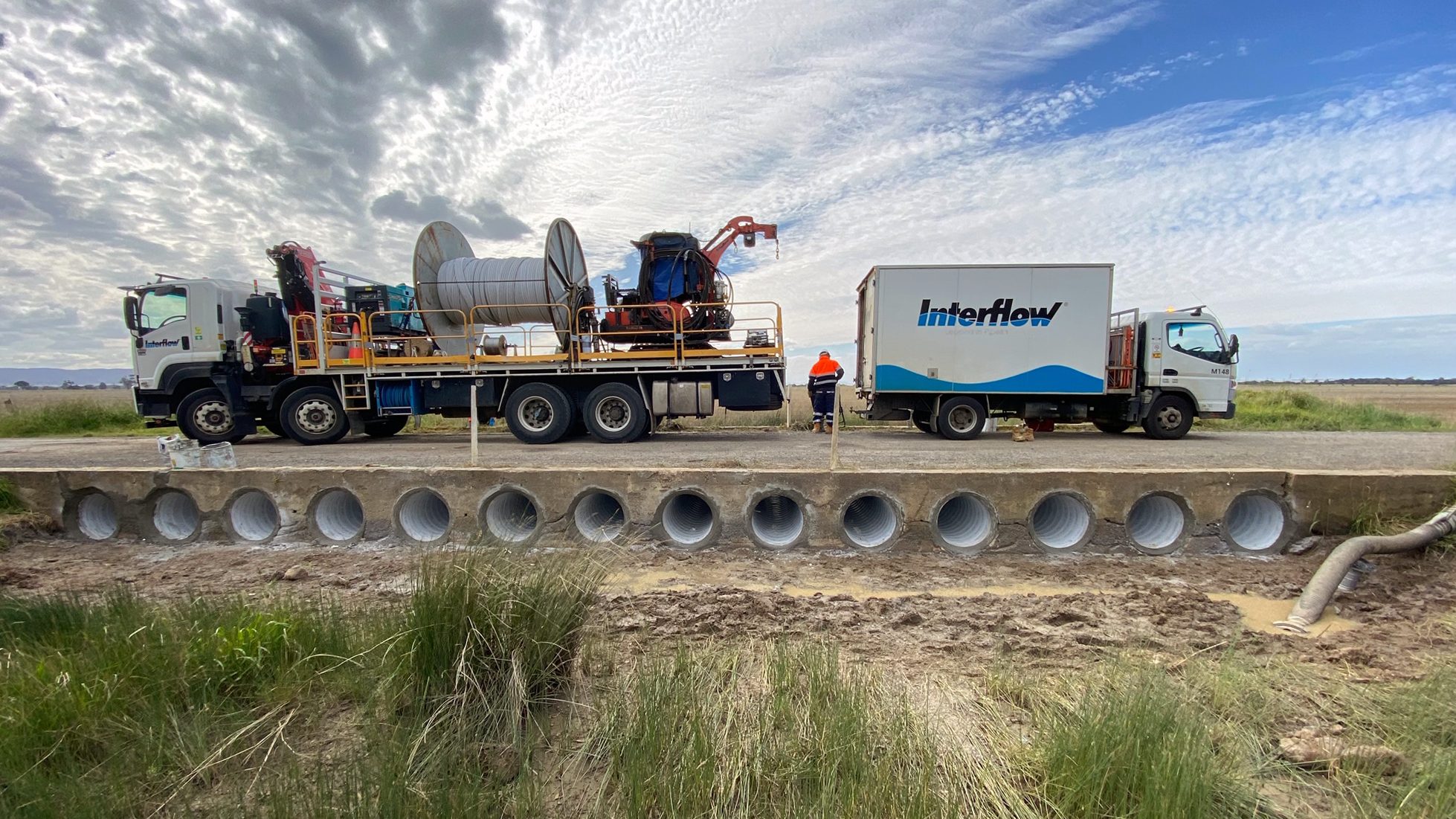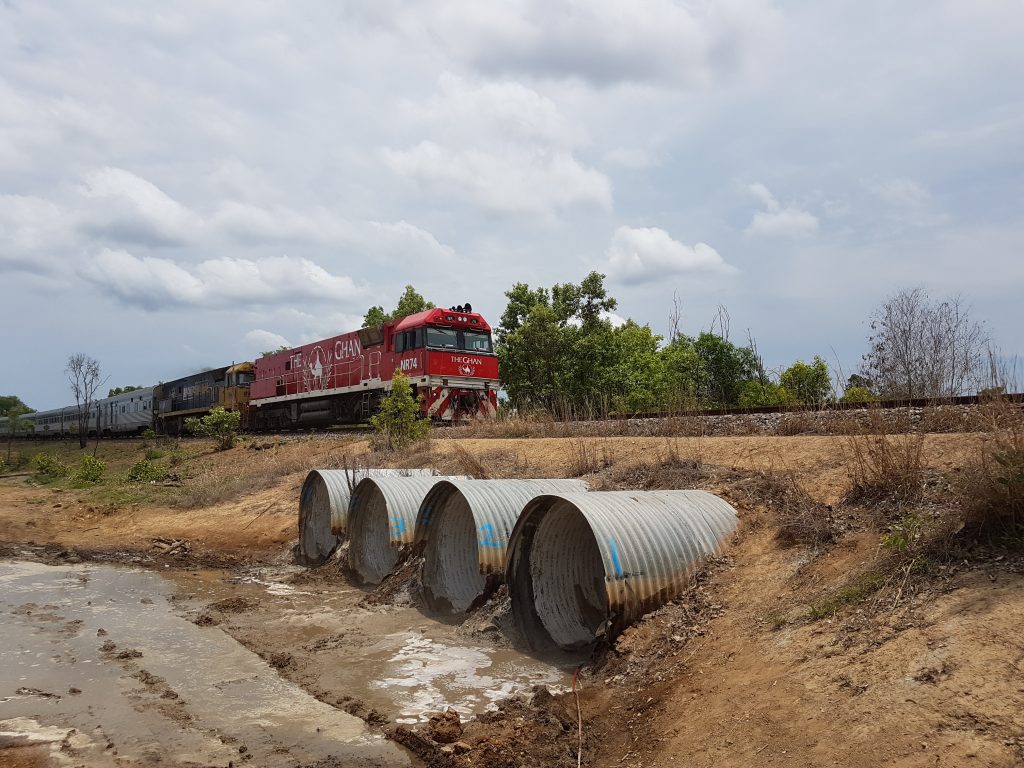
Recently a major Australian international airport conducted a regular condition assessment of its stormwater assets and found that one of the stormwater pipes running under a taxiway showed some emerging defects. Of course, the taxiway was closed as any potential risk of it collapsing as an aircraft travelled overhead was unacceptable.
“Closing down any critical infrastructure at a major airport has a very high daily cost,” says Stephen McGowan, Business Development Manager at Interflow. “They asked if we could provide a solution, and how quickly could we mobilise.”
“We came up with a solution, verified by our in-house Chartered Engineers, and had the works completed just weeks after they first approached us. We delivered the site works over three days and were awarded the contract on the basis of our competence and their trust in our ability to meet the client’s high standards expected of an international airport.
This case study is valuable in demonstrating two important points.
One is that culverts can be found in many situations that are vital to the performance and safety of the land and infrastructure above and around them.
The other is that there are advanced and highly effective maintenance and renewal solutions available to asset owners with outcomes that don’t involve the digging of trenches, the closure of roads or runways or requirements of other costly and time-consuming stakeholder issues.

Typically, once culverts are installed, they don’t receive a great deal of attention.
That has been for various reasons, McGowan says. One is because they’re a cost to the organisation responsible for their management. They don’t attract a revenue stream, unlike wastewater and potable water.
Another is due to the fact that it was assumed these assets would have a 100-year service life. That assumption is proving wildly incorrect in most cases.
As a result of such factors as increased traffic loads, more frequent major weather events, and assumptions around materials and coatings, many culverts are showing signs of failure in less than half that time. Some materials in place, such as zinc coated corrugated metal pipes, are deteriorating much earlier that assumed.
For many culvert asset owners in local council, rail and arterial roads that’s right about now.
“There’s research initiated by V-Line’s Principal Structures Engineer, Ali Chaboki, that presents findings regarding the remaining life in buried corrugated steel culverts at particular service life stages,” McGowan says.
“That research is vital to V-Line, which relies on 5000 culverts and 1200 bridges on the Victorian regional rail network. But information contained in the report can also be extrapolated out to other culvert applications.”
Data from this research and other similar studies can be used by infrastructure managers to re-assess the performance life of their own culverts, ensuring maintenance and renewal work is carried out before major failures impact various stakeholders.
Interflow culvert experts regularly discuss such insights with infrastructure managers and can devise trenchless solutions for culverts that are reaching or have gone beyond their end of functional life.

The safety of its people is a fundamental component of how Interflow operates. So in instances where it’s difficult or dangerous for people to go in and do a culvert repair or renewal job, they also offers non-person-entry options.
“That’s something unique that we offer,” McGowan says. “It means that no one has to go into particular culverts, and that’s a major safety improvement. When a culvert is close to collapse, that’s a far better option.”
No two culvert projects are ever the same, he says. For every customer a unique solution is designed after a deep dive into their specific needs and the needs of their stakeholders.
“We have two of Australia’s top pipe rehabilitation thought leaders in our business, with over 65 years of experience between them,” he says.
“That’s why I mention comfort and confidence. Every engineer wants to know they’re making the very best choices for the future of the infrastructure they manage. We all leave a legacy through our work. At Interflow we strive to be the very best at what we do, and in doing so we create better legacy.”
An excellent example of a project that involved innovation, a deeply customised solution that required an enormous level of experience and insight, was a recent one in Victoria.
“This job was for the Department of Transport and a tier-one civil engineering contractor,” McGowan says. “The contractor was responsible for the rehabilitation of 11 bridge structures.”
“One of them had a culvert made up of three cells using RCP pipes that were each 1.8 metres in diameter. So, they were a significant size and channelled water under a major high-traffic arterial road.”
The water flowing under the bridge was tidally influenced, gushing in and out twice each day. But the culvert pipes, installed in 1992, had begun to fail, threatening the physical security of the road overhead.
The design of the original solution involved diverting traffic and digging up the road to lay new pipes. Interflow instead recommended a trenchless fix, removing any need for detours and delays for road users.
“Our solution was to install a temporary coffer dam, which is an isolation dam, and re-line each culvert, one at a time,” McGowan says.
“We delivered the project in 12 days and didn’t have to dig up the busy road. It was a completely trenchless solution for a great outcome, with no disruption to the traffic above.”
“This was an excellent example of doing something innovative in the culvert space to solve customer problems and to minimise disruption for stakeholders, which is very much aligned with our purpose, to improve the lives of the communities we serve for generations to come.”